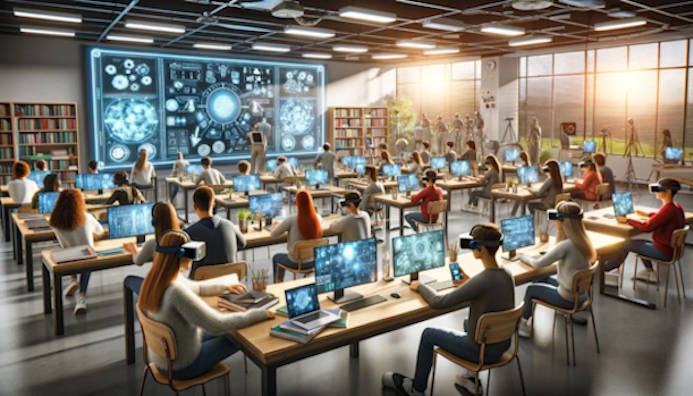
Understanding The Dangers Of AI Use In Education
By Karen Schumacher
Several articles have been written on President Trump’s Executive Order (EO) announcement that provides grants for training on artificial intelligence (AI) to students and teachers. What isn’t clear in that EO is what impact AI has on students or what it means in education. They may learn how to use AI, but it is what AI teaches, or doesn’t teach, that makes it so concerning.
AI tools can be very advantageous for teachers, saving time on grading papers, not having to answer student questions, and spending less time developing lesson plans.
These sites basically explain how a teacher would use AI to develop lesson plans, just plug in what needs to be taught and AI generates it. For example, rather than researching different sources, a student can interact with, and ask questions of George Washington or Chief Joseph.
Using virtual reality (VR) is another AI tool used to educate children, placing them in a make believe world similar to a video game, and these VR lesson plans can be generated for the students. How accurate is this VR field trip about the Pilgrims? Within the discussion are subtle hints of living comfortably within a small space, resource conservation, consumerism, and multiculturalism acceptance. In general, AI tools can teach children how to be a citizen in a global society.
Meanwhile, VR collects a massive amount of data on students.
AI does have some pitfalls to consider, one being the emphasis on objectivity, avoiding opinions, speculation, or unverified claims. While this objectivity is perceived as important, the importance of that objectivity is countered with another perspective.
Predictive technology “gathers analyzes and reports data on each student.” That data can be misused, is not a predictor of how a child will be as an adult, and may affect a child’s future prospects in life. Again, the data gathering is a major concern.
One might consider a secondary push for AI use in education, and that is the enormous corporate profits to be gained.
These are just a few examples of how AI will be used to teach children. Every parent should become familiar with all AI tools being used in their child’s class, and prepare for how it might impact their child. Although AI tools claim to enhance certain skills in children, that is not necessarily true. It is up to the parent to be aware of these potential harms.
While President Trump’s EO may not have garnered much attention, the reality is that it should. It is the use of AI in education that is the threat and his EO is pushing forward to teach children and educators how to use it, as if AI use is the eventual goal itself.
It is a global agenda he is pursuing with this EO, capable of forever changing what is taught as corporations take over information through technology that is created by them, at the expense of children.